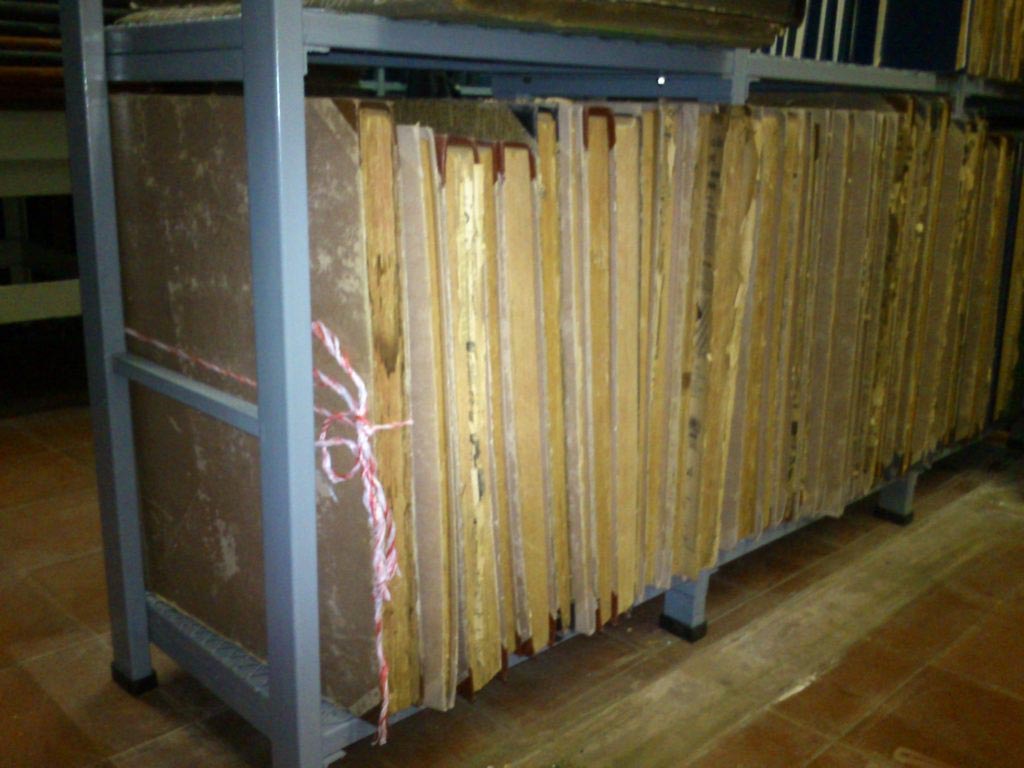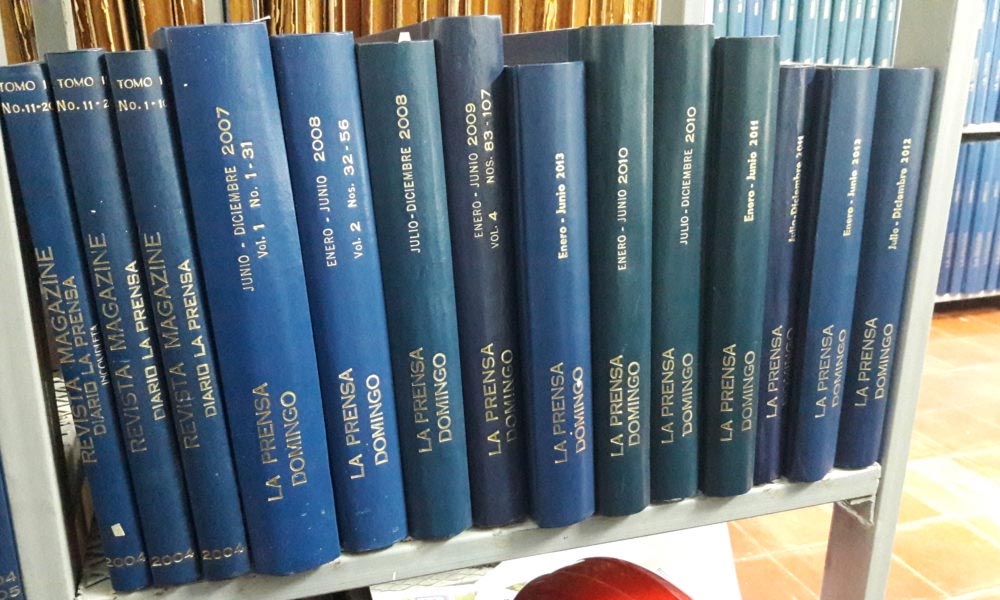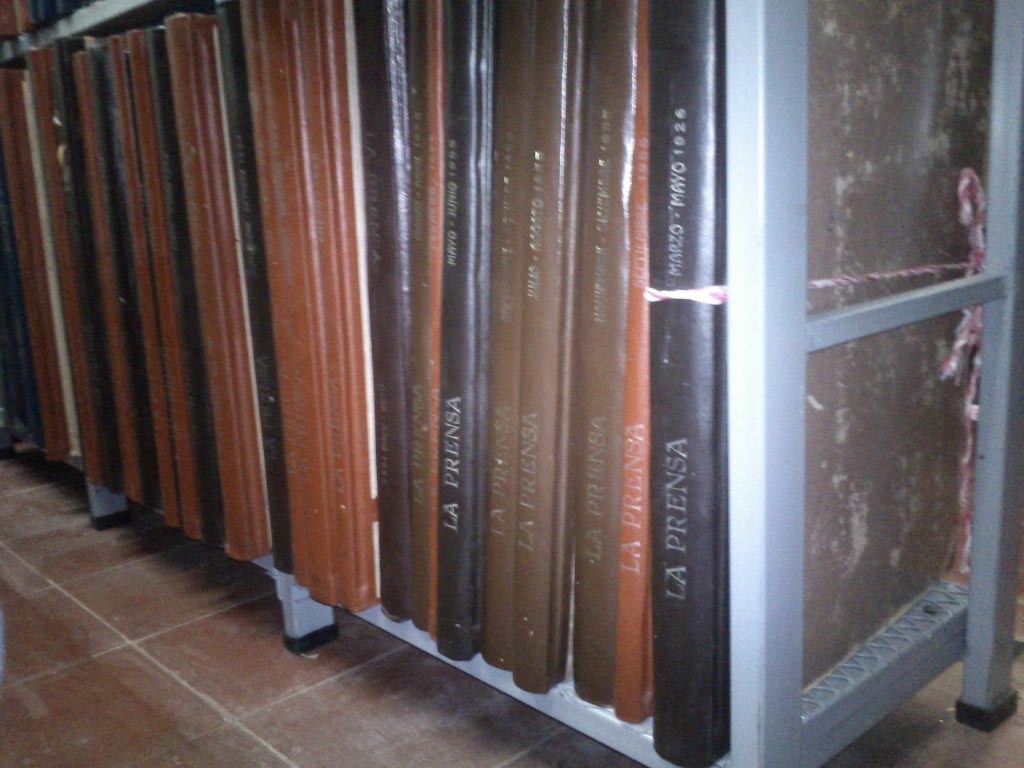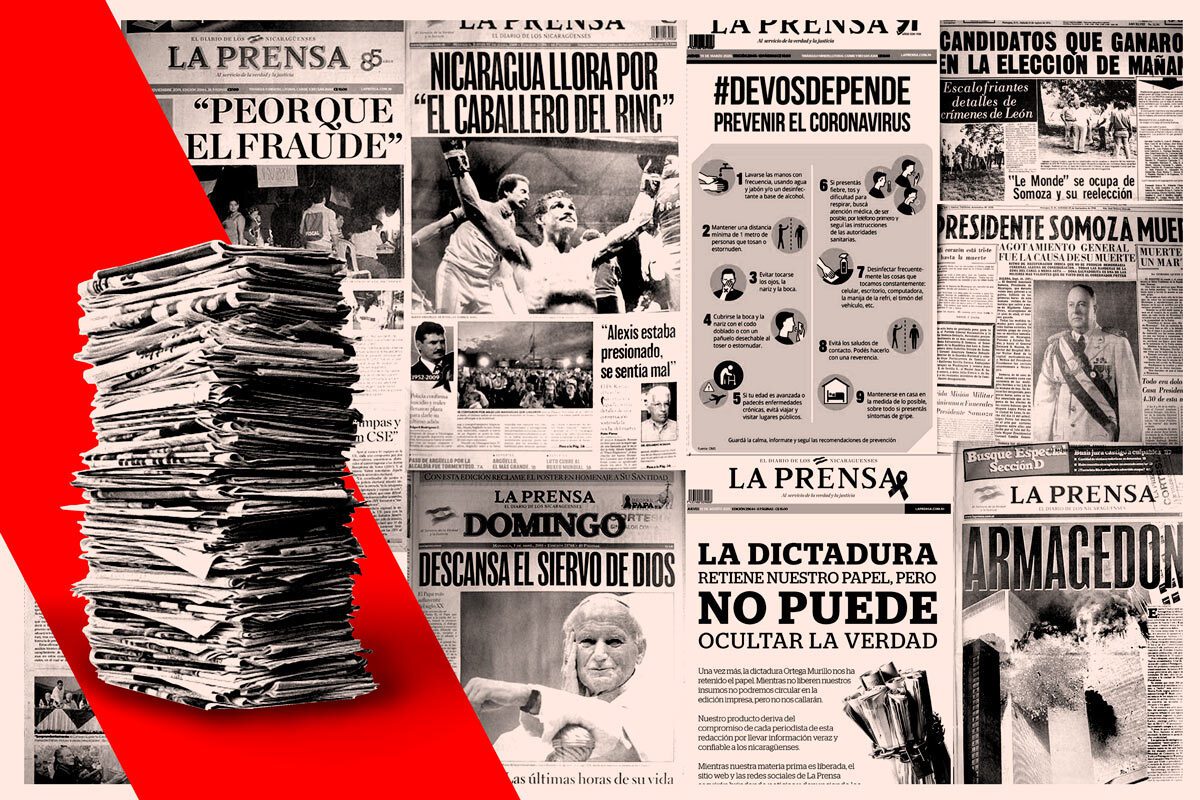At the back of La Prensa’s facilities there was a small room that guarded a treasure. It was an L-shaped room with shelves full of newspapers, magazines, supplements, books, photographs, among other documents that have been published in the last 90 years in Nicaragua. In this space, in addition to all the editions of La Prensa throughout its existence, one could find and consult editions of old newspapers, such as Flecha, La Noticia, La Crónica, El Semanario Novedades, Barricada, El Nuevo Diario, among others.
A historian, consulted on condition of anonymity, said that the newspaper library of La Prensa “was a place for documentary research, reports or for any citizen to obtain knowledge of Nicaraguan history”. The historian considers that the disappearance of the newspaper library is ” an attack to the country’s historical memory”.
Since the regime of Daniel Ortega and Rosario Murillo took over the facilities of La Prensa on August 12, 2021, it has not made any statement about the utility that the newspaper library of La Prensa will have. It is not known if it will continue to be preserved, with special care, as it was until the confiscation of the facilities. Neither is it mentioned in the information published by the pro-government media in the description of the José Coronel Urtecho training center, which was inaugurated last April in the confiscated facilities; nor is there any information on the investment plans of this new center, which costs around $7,000,000, according to official data.
In a country like Nicaragua, whose history has been manipulated by different power groups, newspapers, with different editorial policies, are one of the most important primary sources of the historical record. As described in dystopian novels such as George Orwell’s 1984 and Aldous Huxley’s Brave New World, the appropriation of the narrative is one of the crucial parts of establishing authoritarian regimes, and the Ortega and Murillo dictatorship continues its goal of imposing a single narrative by repressing the media and closing access to the newspaper library as a historical archive for research.
Recibe nuestro boletín semanal

Still remaining in the country is the library of the Central Bank of Nicaragua (BCN), a public center that holds archives of newspapers, books and historical documents. It has three branches throughout the country, located in Managua, León and Matagalpa. However, none has the number of editions and magazines that were in the newspaper library of La Prensa, which also fed the Institute of History of Nicaragua and Central America (Ihnca), of the also confiscated Central American University (UCA).
On May 10, 2022, La Prensa published an editorial denouncing the abandonment of the newspaper library. The media outlet’s board of directors stressed that newspapers, like oral, visual and other written publications, are a raw material of history. “Historians discern, analyze, and contrast newspapers and other documents through a rigorous selection procedure (…) In the writing of good history, as in good journalism, truth must be sought, revealed, and told above all else. But this is not always the case. History can be manipulated,” the editorial states.
La Prensa believes that history can be distorted to “turn villains into heroes, and vice versa”. For this reason, it is important to preserve primary sources, such as the newspapers kept in the newspaper library, to “unmask the falsifiers and make historical truth shine”.
Special care

The material from which newspapers are made is very fragile, so they need special care. A former employee of the newspaper library says that they should be kept in a clean, dry place with a constant cool temperature and not too brightly lit. Every day, very early in the morning, the air conditioning must be turned on so that the newspapers are not damaged. The heat wave of the last few months may be affecting the material in La Prensa’s archives, according to this former employee.
A former La Prensa reporter points out that in these facilities there was a photo library, full of printed photos or negatives of thousands of unpublished photographs of the newspaper since the seventies. “In each coverage, photographers take hundreds of pictures, but sometimes only one or no pictures are published… Then the rest of the pictures remained archived or in negatives,” says the former reporter.
The journalist says that in the supplement in which she wrote, Domingo magazine, she used to look for those photographs to publish them as galleries of historical events that have happened in Nicaragua. “I know there was an archive of digitized photos, but most of them were not or were in negatives,” she adds.
In the newspaper library there was also a collection of official newspapers (La Gaceta), which were kept until the seizure of the newspaper’s facilities. Executives of La Prensa said that before the death of Jaime Chamorro Cardenal, the last director of the newspaper, he acquired microfilms of the editions of La Prensa between 1956 and 1986, and an album of more than 300 photographs of the Somoza family and the Chamorro family.

In addition to the physical newspaper library, La Prensa had a system that digitized the entire archive of publications from the last two decades. It was an initiative to facilitate the search for future research. The status of this computerized archive is not known either, according to an executive of the newspaper.
An academic researcher who frequented the facilities of La Prensa said that all dictators try to create their own story, using propagandists, writers, intellectuals or university professors. For the researcher, regimes, such as the Ortega-Murillo regime, try to distort the narrative, but they can even go much further: erase records to rewrite history and thus legitimize their actions. “This distortion of history is something that other caudillos, such as Franco in Spain, achieved in other times… Although, now, it is very difficult to do so because of all the digital means that exist to store information,” says the researcher.
The general manager of La Prensa, Juan Lorenzo Holmann Chamorro, said that before the confiscation of the newspaper, the Board of Directors gave some historical documents to the University of Tulane, Louisiana, United States, so that they could be preserved. However, it is a minimal amount compared to those that were kept on the shelves of the newspaper library, which not only belonged to La Prensa but also to the people of Nicaragua.

